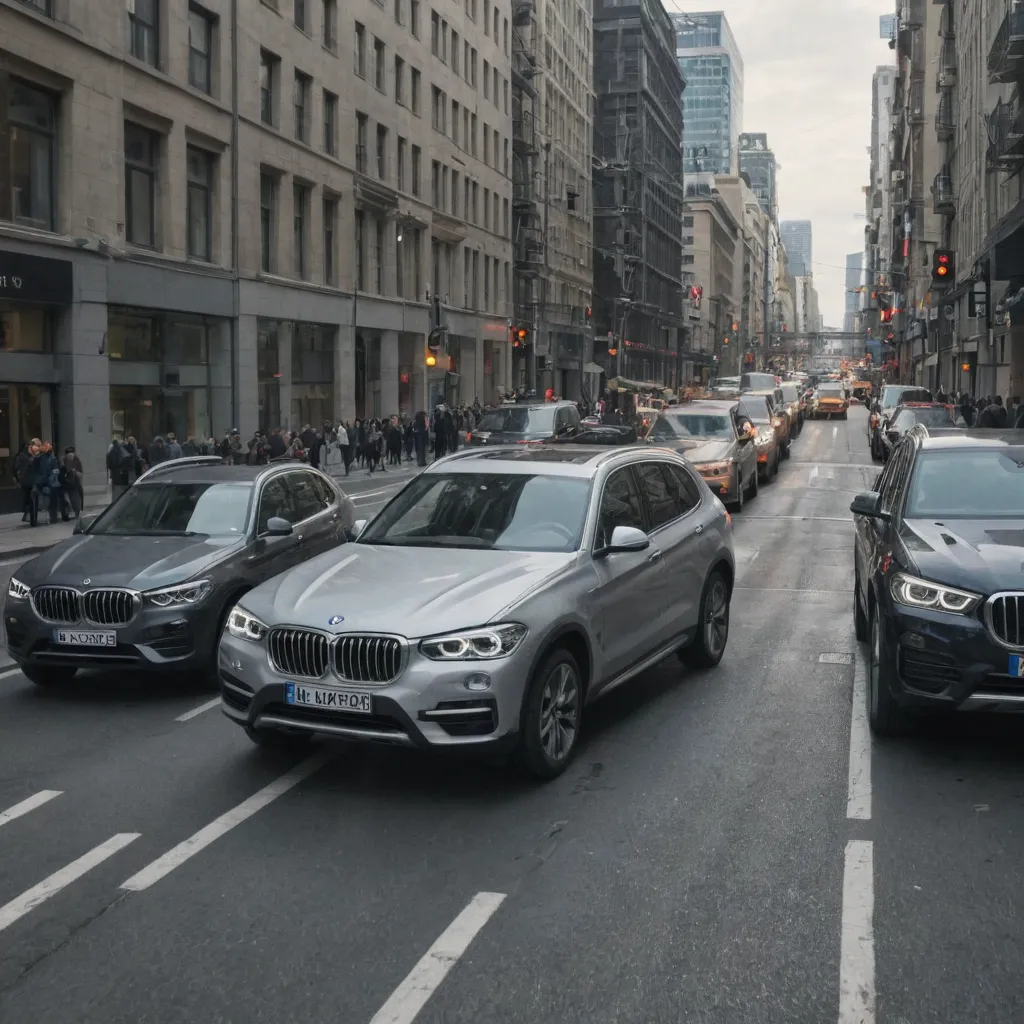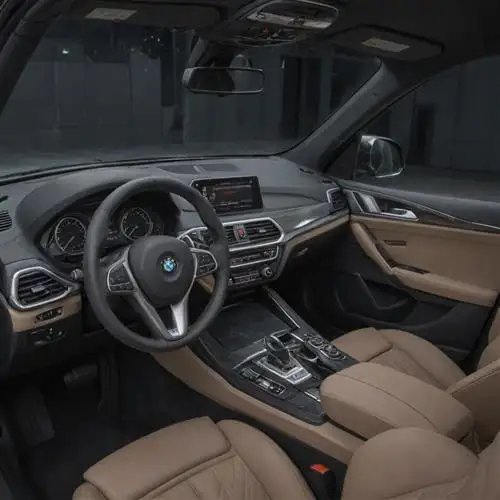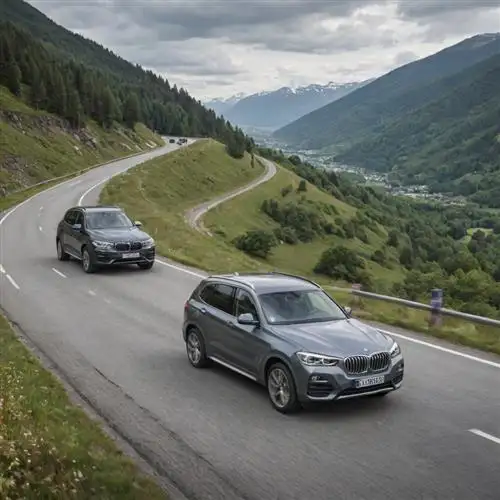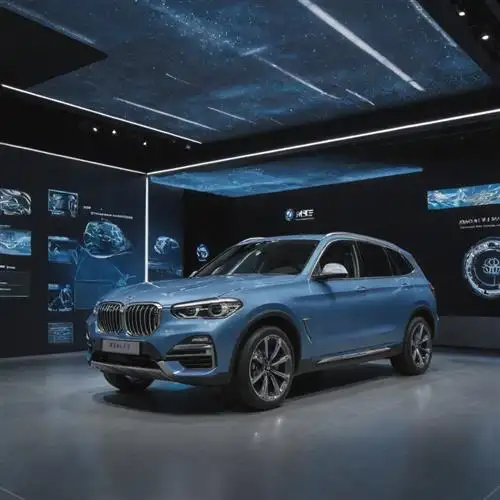
Exterior Design Comparison
When it comes to the external appearance of the BMW X3 and the Audi Q5, both vehicles boast a distinct and sophisticated look that appeals to a wide range of consumers. The BMW X3 exudes a sense of athleticism and power, with its bold kidney grille, sculpted hood, and sleek, aerodynamic lines. The front end is particularly striking, with the iconic BMW logo prominently displayed and the headlights seamlessly integrated into the overall design.
In contrast, the Audi Q5 takes a more refined and elegant approach to its exterior styling. The Singleframe grille, a hallmark of Audi's design language, is flanked by sharp, angular headlights that give the vehicle a sophisticated and modern appearance. The Q5's body lines are more subtle and flowing, creating a sense of elegance and refinement.
One key difference between the two models is the use of materials. The BMW X3 features a more prominent use of plastic and other lightweight materials, which contributes to its dynamic and athletic appearance. The Audi Q5, on the other hand, boasts a more premium and luxurious feel, with a greater emphasis on metal and high-quality materials.
When it comes to dimensions, the BMW X3 and the Audi Q5 are quite similar in size. The X3 is slightly longer and wider, while the Q5 is a bit taller. This difference in dimensions can affect the overall visual perception of the vehicles, with the X3 appearing more muscular and the Q5 appearing more stately and upright.
In terms of wheel size and design, both the BMW X3 and the Audi Q5 offer a range of options to suit individual preferences. The X3 typically features larger, more aggressive-looking wheels, while the Q5 leans towards a more refined and elegant wheel design.
Interior Comfort and Luxury
The BMW X3 and Audi Q5 are two of the most popular luxury midsize SUVs on the market, each offering a unique blend of interior comfort and luxury. When it comes to the cabin experience, both vehicles excel, but there are some key differences that may sway a buyer's decision.
The BMW X3 boasts an impeccably crafted interior, with high-quality materials used throughout. The fit and finish are exceptional, and the attention to detail is immediately apparent. The seats are supportive and comfortable, with a wide range of adjustments to ensure a personalized fit. The driving position is excellent, offering a commanding view of the road and excellent visibility.
In terms of technology, the BMW X3 comes loaded with a comprehensive suite of features. The iDrive infotainment system is intuitive and user-friendly, with a large, high-resolution display and responsive touch controls. The available head-up display and gesture control further enhance the user experience, allowing drivers to keep their eyes on the road while accessing key information and controls.
The Audi Q5, on the other hand, offers a similarly luxurious and well-appointed interior. The cabin is spacious and airy, with an elegant and modern design. The materials used are top-notch, and the build quality is exceptional. The seats are comfortable and supportive, with available heating, ventilation, and massage functions for enhanced comfort.
The Audi Q5's technology features are also impressive, with the brand's renowned MMI infotainment system taking center stage. The system is easy to navigate and offers a wide range of connectivity and entertainment options. The available virtual cockpit, which replaces the traditional instrument cluster with a high-resolution digital display, is a standout feature that enhances the driver's experience.
Performance and Handling Characteristics
When it comes to the performance and handling characteristics of the BMW X3 and Audi Q5, both luxury SUVs offer exceptional driving dynamics, but with distinct differences that may sway a buyer's decision. The X3 is renowned for its sporty and engaging driving experience, thanks to its rear-wheel-drive-based chassis and BMW's renowned engineering prowess. The SUV delivers responsive steering, impressive cornering abilities, and a well-balanced ride that caters to those seeking a more dynamic and driver-focused experience.
In contrast, the Audi Q5 prioritizes a more refined and composed driving character, with a focus on comfort and stability. The Q5's quattro all-wheel-drive system provides excellent traction and grip, making it a confident performer on a variety of road conditions. While the Q5 may not offer the same level of outright sportiness as the X3, it delivers a smooth and comfortable ride that appeals to those seeking a more relaxed driving experience.
Under the hood, the X3 offers a range of potent engine options, including turbocharged four-cylinder and six-cylinder units, as well as a high-performance M variant. These engines provide ample power and acceleration, with the top-tier X3 M delivering a thrilling 0-60 mph time of around 4 seconds. The X3's engines are paired with smooth and responsive transmissions, further enhancing the overall driving experience.
The Audi Q5, on the other hand, also boasts a selection of capable engine options, including turbocharged four-cylinder and six-cylinder units, as well as a plug-in hybrid variant. While the Q5's performance may not quite match the X3's, it still delivers a satisfying and confident driving experience, with well-tuned powertrains and transmissions that prioritize refinement and efficiency.
When it comes to handling, the X3's rear-wheel-drive-based platform and dynamic tuning give it a more agile and responsive feel, allowing for spirited cornering and a heightened sense of driver engagement. The Q5, with its front-biased quattro all-wheel-drive system, offers excellent stability and traction, making it a confident and composed performer on winding roads and in inclement weather.
Technological Features and Connectivity
When it comes to technological features and connectivity, the BMW X3 and Audi Q5 offer a range of impressive capabilities. Both vehicles are equipped with advanced infotainment systems, but the specific features and user experience can differ between the two models.
The BMW X3 comes standard with the brand's iDrive 7.0 infotainment system, which is renowned for its intuitive design and responsive performance. The system features a large, high-resolution touchscreen display, as well as the option to control it using a rotary dial and various shortcut buttons on the center console. The iDrive system offers a wealth of connectivity features, including Apple CarPlay, Android Auto, and built-in navigation with real-time traffic updates. Additionally, the X3 can be equipped with a premium Harman Kardon or Bowers & Wilkins sound system, providing an immersive audio experience for passengers.
In contrast, the Audi Q5 is equipped with the brand's latest MMI (Multi-Media Interface) infotainment system. This system features a sleek, tablet-like touchscreen display and offers a range of connectivity options, including Apple CarPlay, Android Auto, and built-in navigation with Google Earth integration. The MMI system is known for its clean, minimalist design and intuitive controls, making it easy for users to navigate through various functions and settings.
Both the BMW X3 and Audi Q5 offer impressive connectivity features, allowing drivers and passengers to seamlessly integrate their smartphones and access a variety of apps and services. The X3 also offers the option of a digital instrument cluster, providing a customizable and high-tech driving experience. The Q5, on the other hand, can be equipped with Audi's virtual cockpit, which replaces the traditional analog gauges with a large, high-resolution digital display.
Safety and Driver Assistance Systems
When it comes to safety and driver assistance systems, both the BMW X3 and Audi Q5 offer a comprehensive suite of features designed to keep you and your passengers secure on the road. The BMW X3 boasts an impressive array of standard and available safety technologies, including forward collision warning, automatic emergency braking, lane departure warning, and a rearview camera. The optional Driving Assistance Professional Package further enhances the X3's safety capabilities, adding features like active lane keeping assist, traffic jam assist, and evasion aid.
Similarly, the Audi Q5 is well-equipped with an array of advanced safety systems. Standard features include pre-sense city, which can detect pedestrians and apply the brakes automatically, as well as lane departure warning and a rearview camera. Buyers can also opt for the available Driver Assistance Package, which adds adaptive cruise control, active lane assist, and intersection assist, among other features.
Both the BMW X3 and Audi Q5 have earned top safety ratings from reputable organizations, demonstrating their commitment to protecting drivers and passengers. When it comes to choosing between the two, the BMW X3 Excels at Comfort, offering a smooth and composed ride that enhances the overall driving experience. However, the Audi Q5 also has a well-deserved reputation for its excellent handling and responsiveness, making it a strong contender in the luxury SUV segment.
















